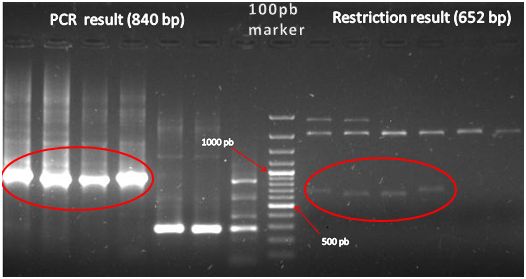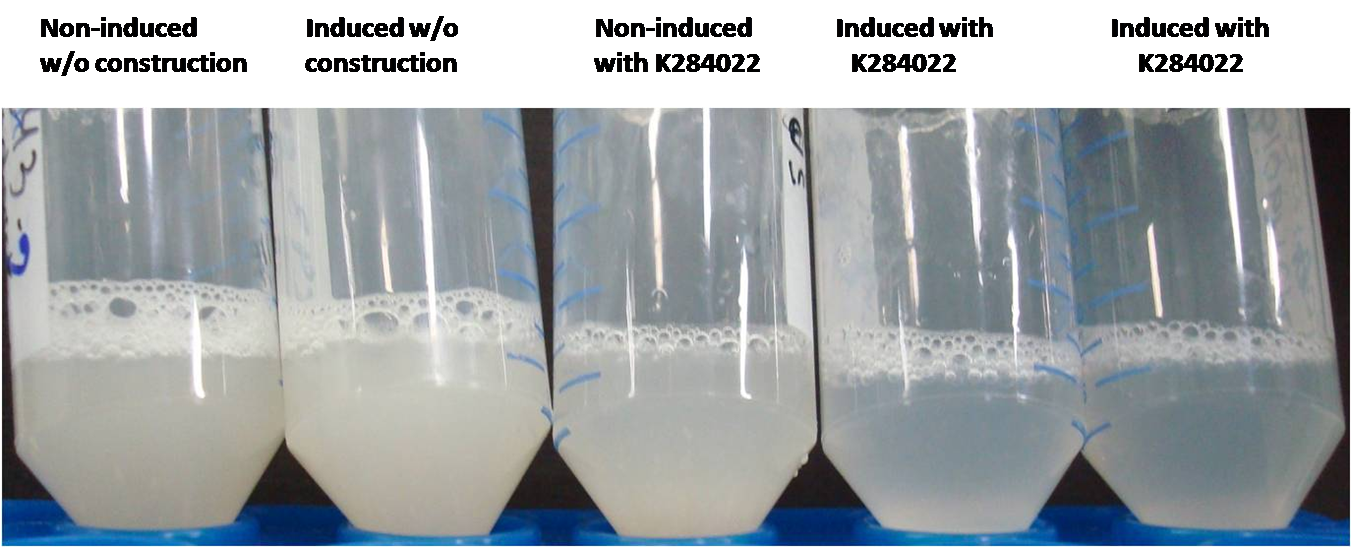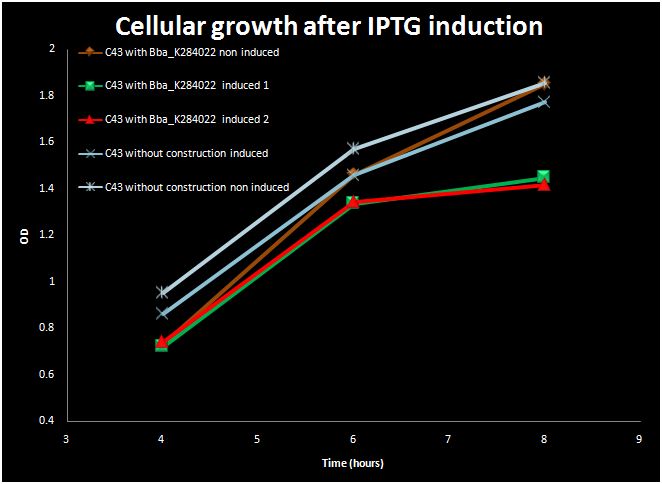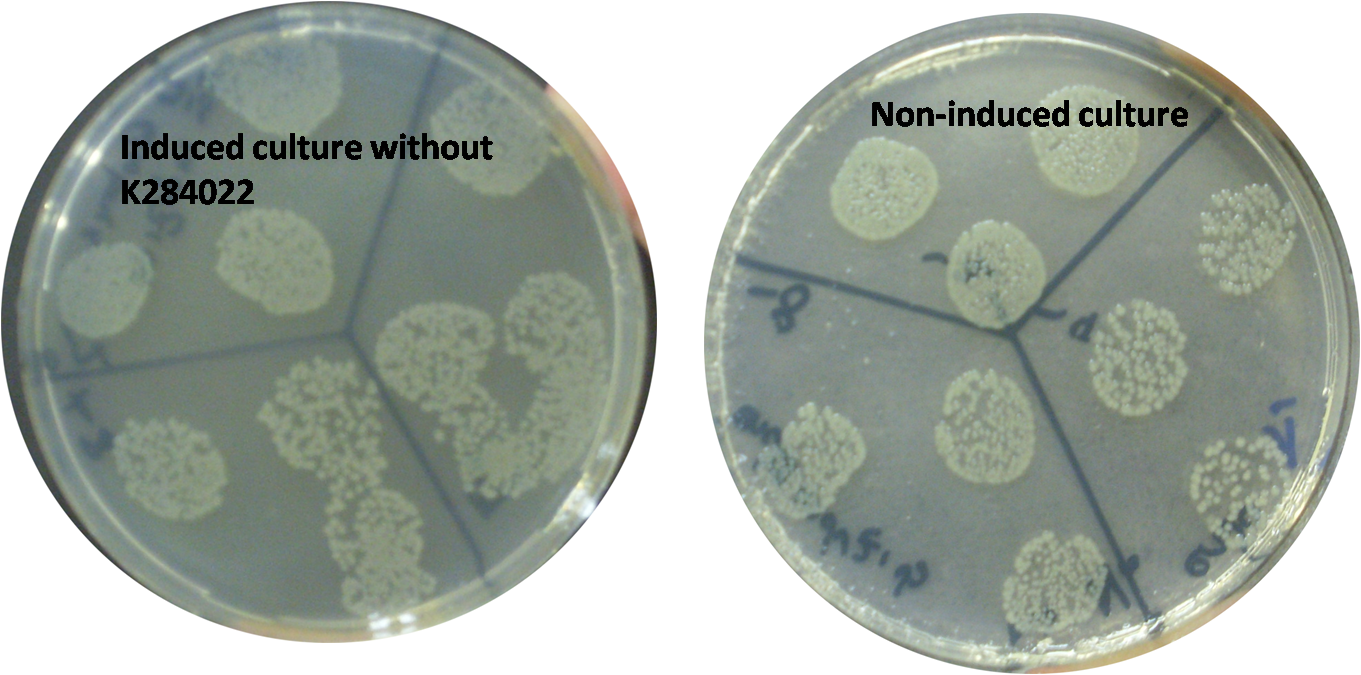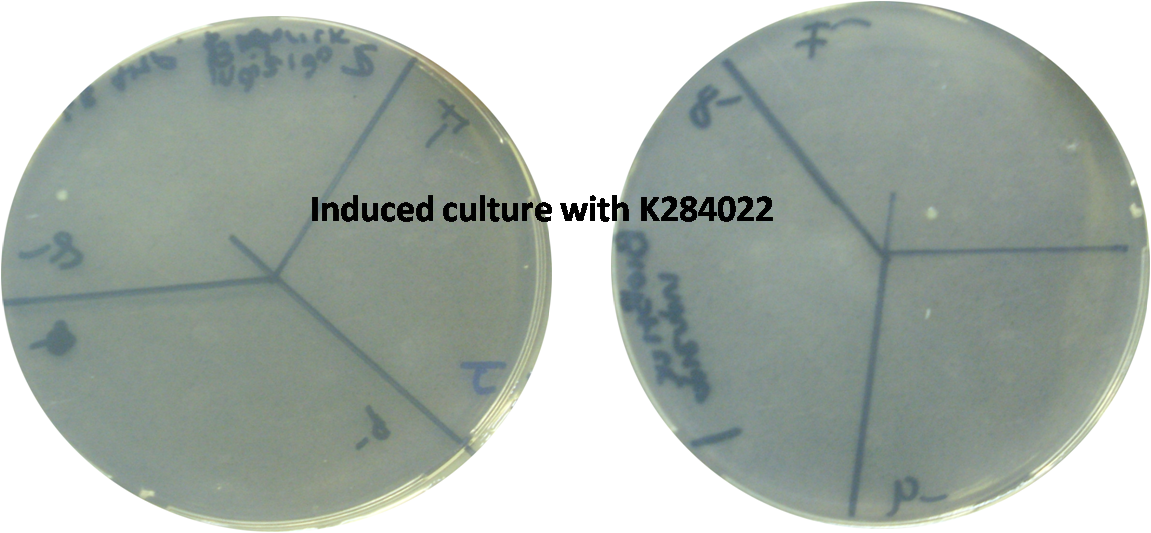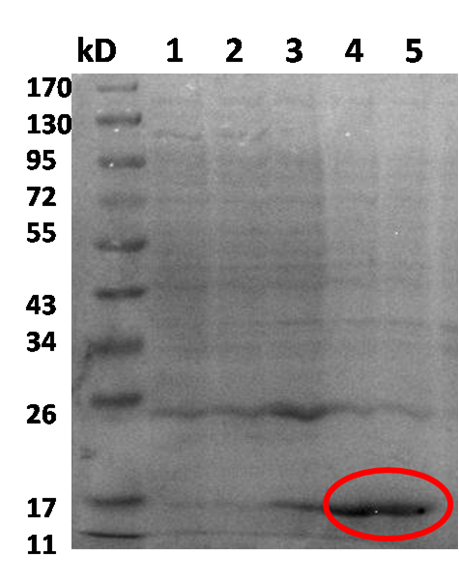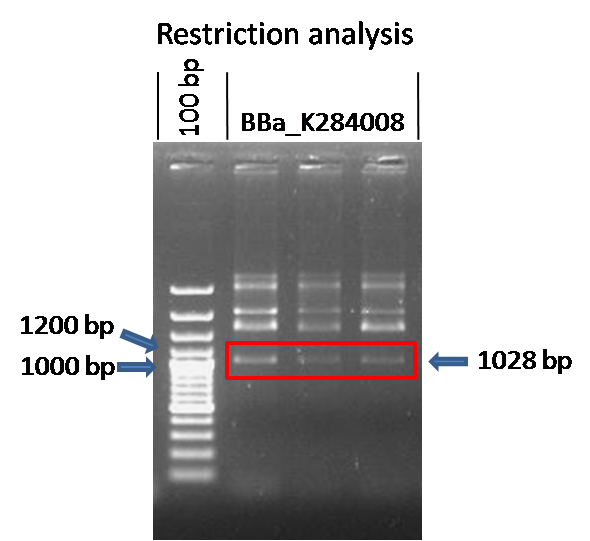Team:UNICAMP-Brazil/Coliguard/Results
From 2009.igem.org
(New page: {{:Team:UNICAMP-Brazil/inc_topo}} ==The Coliguard - Results== {{:Team:UNICAMP-Brazil/inc_rodape}}) |
|||
| (18 intermediate revisions not shown) | |||
| Line 1: | Line 1: | ||
{{:Team:UNICAMP-Brazil/inc_topo}} | {{:Team:UNICAMP-Brazil/inc_topo}} | ||
| - | |||
| + | =='''The Coliguard - Results'''== | ||
| + | |||
| + | ==== Test and characterization of device''' [http://partsregistry.org/wiki/index.php?title=Part:BBa_K284022 BBa_K284022] ==== | ||
| + | |||
| + | We concluded the construction of the device [http://partsregistry.org/wiki/index.php?title=Part:BBa_K284022 BBa_K284022]. The results are shown next: | ||
| + | |||
| + | We made two confirmation tests. The first test consisted in a PCR with VF2 primer forward (general primer forward backbone plasmid) and VR primer reverse (general primer reverse backbone plasmid). We noticed the correct band size for this amplification (833 bp). The second test consisted in enzyme restriction analysis with EcoRI and PstI. We noticed the right band size again (670 bp). These two tests confirmed undoubtedly the correct insertion and position of our new device. | ||
| + | |||
| + | [[Image:New_biobrick.JPG|500px|center]] | ||
| + | <center>Agarose gel 1 %: PCR amplification and restriction enzyme analysis </center> | ||
| + | |||
| + | |||
| + | After the confirmation of the construction we characterized the part through the test that is described in the Notebook. [https://2009.igem.org/Team:UNICAMP-Brazil/Notebooks/October_15#Testing_the_new_device Click here for details.] | ||
| + | |||
| + | We confirmed that our part really works as expected!!!! | ||
| + | |||
| + | The OD measurements showed a decrease on the growth of induced strains transformed with BBa_K284022, in comparsion with induced strains transformed with BBa_K112806 (without the promoter) and the non-induced ones. The lysis of the cells expressing T4 endolysin can be visualized in the picture below. A graphic comparing the growing of induced and non-induced cultures after the induction is also shown. | ||
| + | |||
| + | [[Image:cell-lysis.png|500px|center]] | ||
| + | |||
| + | |||
| + | [[Image:Graph 1. Growth cellular after ITPG induction1.JPG|500px|center]] | ||
| + | |||
| + | Besides that, the death of the induced cells capable of expressing the endolysin was confirmed by the absence of growing colonies on the plates. On the other hand, the cultures that weren't expressing the endolysin grew normally. | ||
| + | |||
| + | [[Image:Non-induceds.png|500px|center]] | ||
| + | |||
| + | [[Image:Induced.png|500px|center]] | ||
| + | |||
| + | It was also possible to observe the overexpression of T4 endolysin through an SDS-PAGE. | ||
| + | |||
| + | [[Image:SDS-PAGE.png|300px|center]] | ||
| + | |||
| + | [[Image:Legenda.png|300px|center]] | ||
| + | |||
| + | |||
| + | ==== Cre-Recombinase without ATG's biobrick assemble ==== | ||
| + | |||
| + | The biobrick of Cre-Recombinase without the ATG start codon was successful assembled. You can check it on registry catalog under accession name [http://partsregistry.org/wiki/index.php?title=Part:BBa_K284031 BBa_K284031]. This biobrick was also the only one we constructed according to the standard assembly strategy. | ||
| + | |||
| + | The confirmation of it's assemble can be checked on our notebook, on [https://2009.igem.org/Team:UNICAMP-Brazil/Notebooks/October_9 October 9th] and [https://2009.igem.org/Team:UNICAMP-Brazil/Notebooks/October_10 October 10th]. | ||
| + | |||
| + | Although we assembled this part’s biobrick, we didn’t have enough time to assemble the entire device, i.e., the construction with the AGTC repetition and the constitutive promoter. Therefore, we didn’t performed any experiments in order to characterize this part. | ||
| + | |||
| + | ==== PY Promoter + RFP - Construction of the device ==== | ||
| + | |||
| + | We have confirmed the construction of our biobrick [http://partsregistry.org/Part:BBa_K284008 BBa_K284008]. This biobrick consists in the PY promoter regulating a RFP reporter. | ||
| + | |||
| + | We designed this device to perform a conjugation experiment to characterize PY promoter and analyze its activity data in comparison with conjugation events. We want to analyze if the PY promoter activity and the conjugation begin at the same time to know if it is possible to use this promoter as a recognition mechanism. | ||
| + | |||
| + | To confirm our part we digested it with XbaI and PstI to analyze the size of the resulting fragments in an agarose gel: | ||
| + | |||
| + | [[Image:py_gel_10.png|300px|center]] | ||
| + | |||
| + | The expected size for the fragment excised with XbaI and SpeI from the plasmid is 1028 bp. | ||
| + | As we can observe in the gel photo, all plasmids presented bands compatible with the size expected for the digestion. | ||
| + | We believe the other bands in the agarose gel represent the digested plasmid without our fragment and the circularized plasmid in different conformations. | ||
| + | |||
| + | For more information see our lab notebook ([https://2009.igem.org/Team:UNICAMP-Brazil/Notebooks/October_12 October 12] and [https://2009.igem.org/Team:UNICAMP-Brazil/Notebooks/October_13 October 13]) | ||
{{:Team:UNICAMP-Brazil/inc_rodape}} | {{:Team:UNICAMP-Brazil/inc_rodape}} | ||
Latest revision as of 03:56, 22 October 2009
| |||||||||||||||||||||||||||||||||||
 "
"









